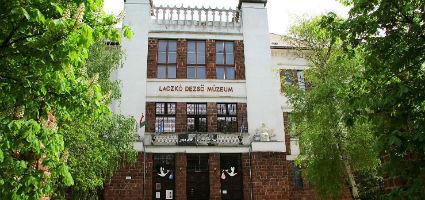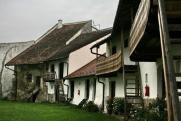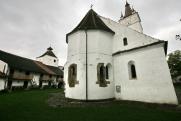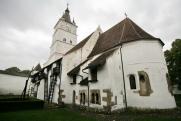 |
Address: 8200, Veszprém Török Ignác u. 7.
Phone number: (88) 789-791
E-mail: titkar@ldm.hu
Opening hours: Thu-Sat 10-18
|
The exhibition presents characteristic regions of Transylvanian religious architecture via paintings, drawings, photographs and reproductions, while also dealing with characteristics geo-historical styles of Kalotaszeg, Szilágyság, Székely Land and Szász Land via representation of temple. The exhibition aims at providing a comprehensive overview of the types of sacred buildings in multi-religious and multi-ethnic Transylvania. To do this, floor plans, construction drawings and specifications, views and graphics depicting church interior as well as photographs serve to illustrate.
About 60 pieces of artworks selected from photos from the Museum of Ethnography from the period 1880 to1920. The selection of photos, on the other hand is to represent a rich cultural history in terms of documentation.
In the first section, wooden temples, drawings illustrating towers are presented, which commemorate the Kalotaszeg Mezőség and Szilágyság. These are the finest examples of how historical styles were not only applied by the most educated in the richest regions, but - if belatedly - the same styles were applied in poorer villages as well. The ethnographic researches recognized the earliest that wooden churches, towers are to be found in the largest number in the north-eastern part of Hungary and the eastern mountain region.
The next exhibition panel shows the Székely fortress churches via authentic architectural and ethnographic documentation. The usually Gothic churches - like the nearby Saxon edifices - were surrounded by walls that serve as shelter to the population.
The third exhibition unit deal with Saxon fortified churches. The exhibits related to wear and other items of those who found refuge in the fortress churches were mostly donated by private collectors. In addition, we also show the Csíksomlyó Village Fair that offered spiritual retreat and inspiration for the Szekelys and Moldova people as well from the early ages of Hungarian ethnographic filmmaking, the 1940s.
On the upstairs floor of our exhibition we offer works of art repr4esenting contemporary fine arts Transylvania through works of artists who moved to Veszprém County.



